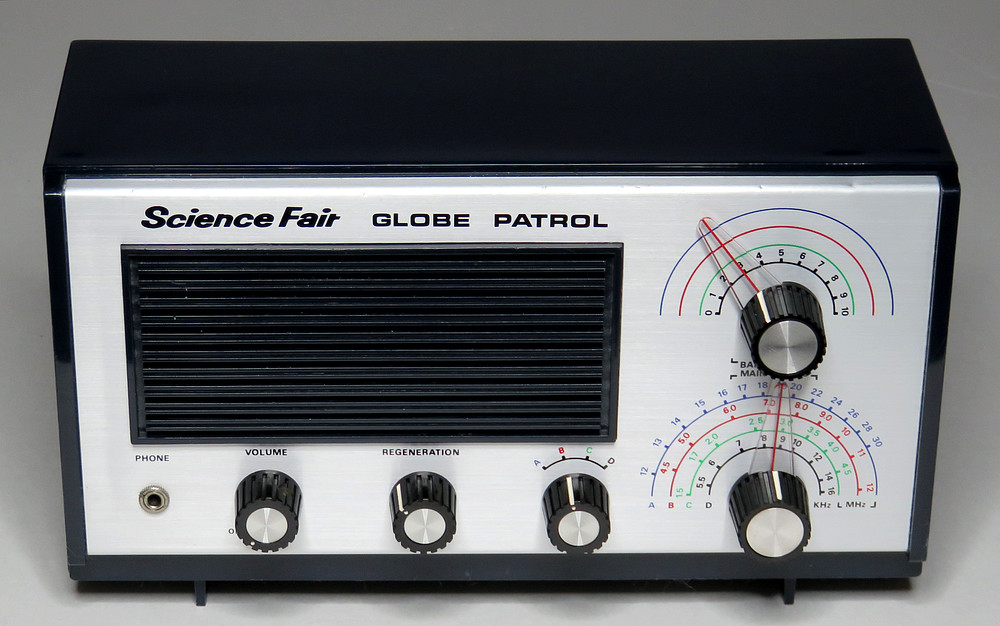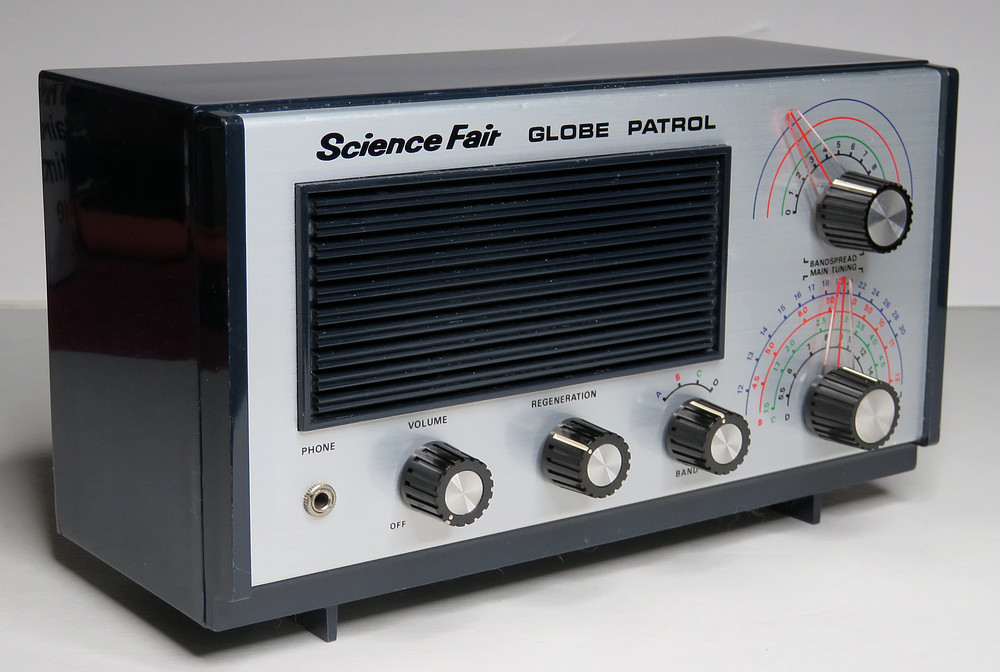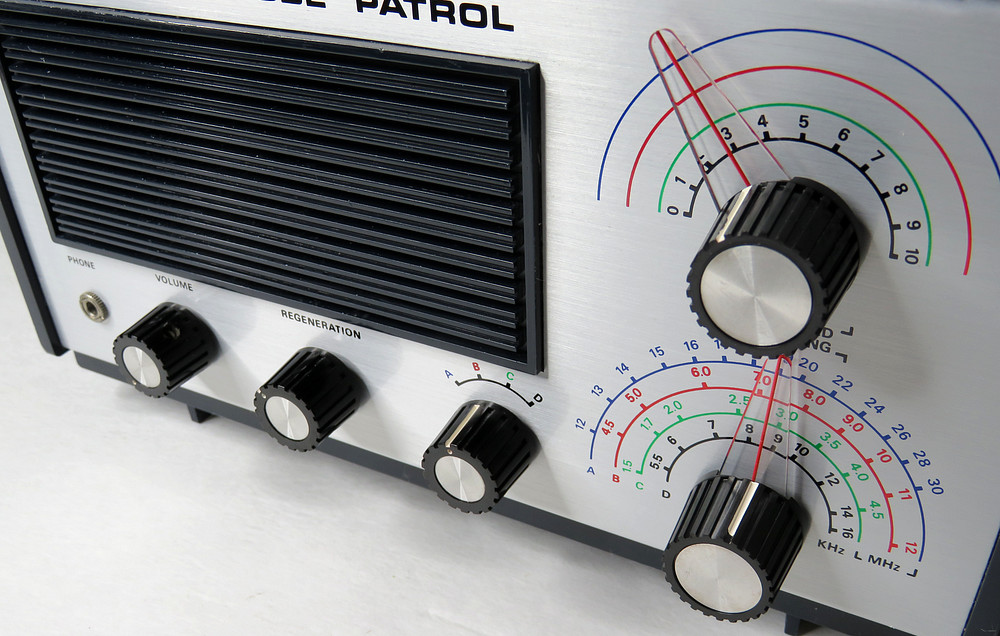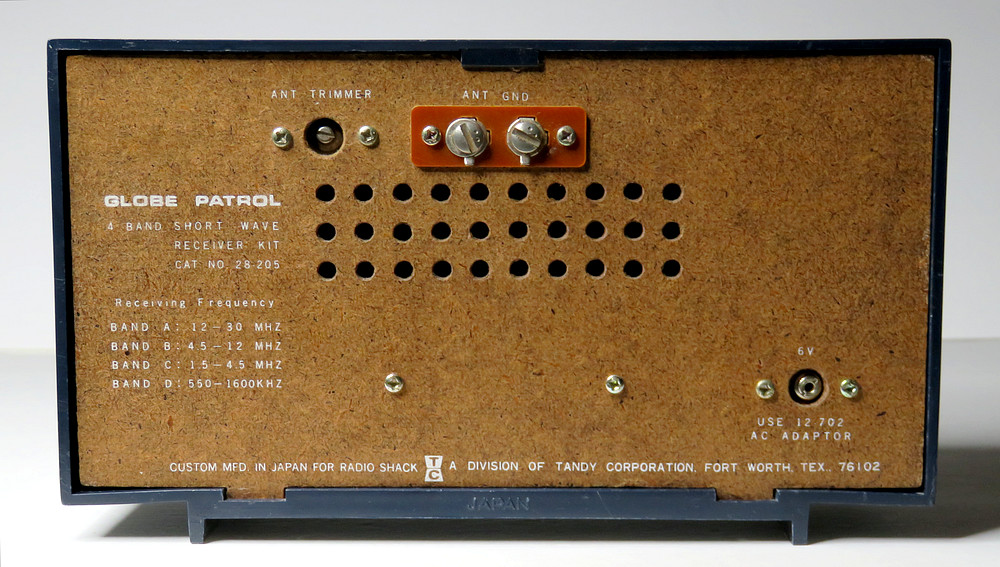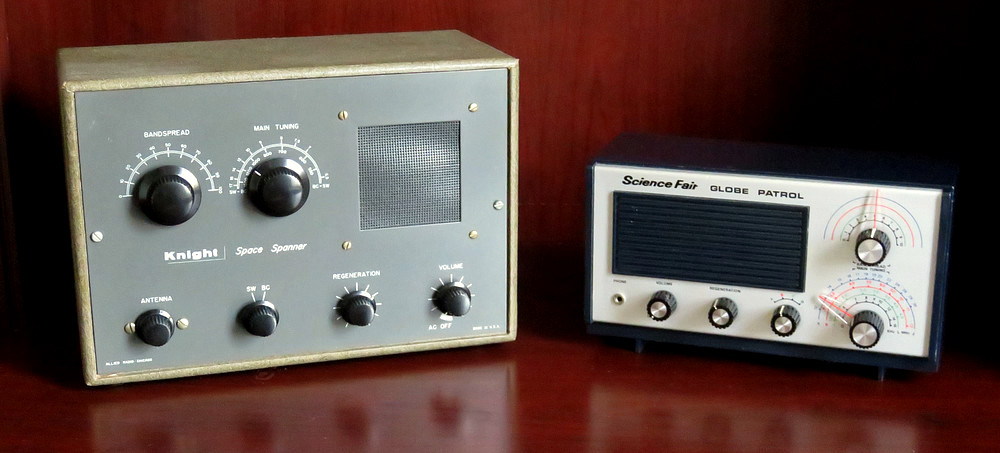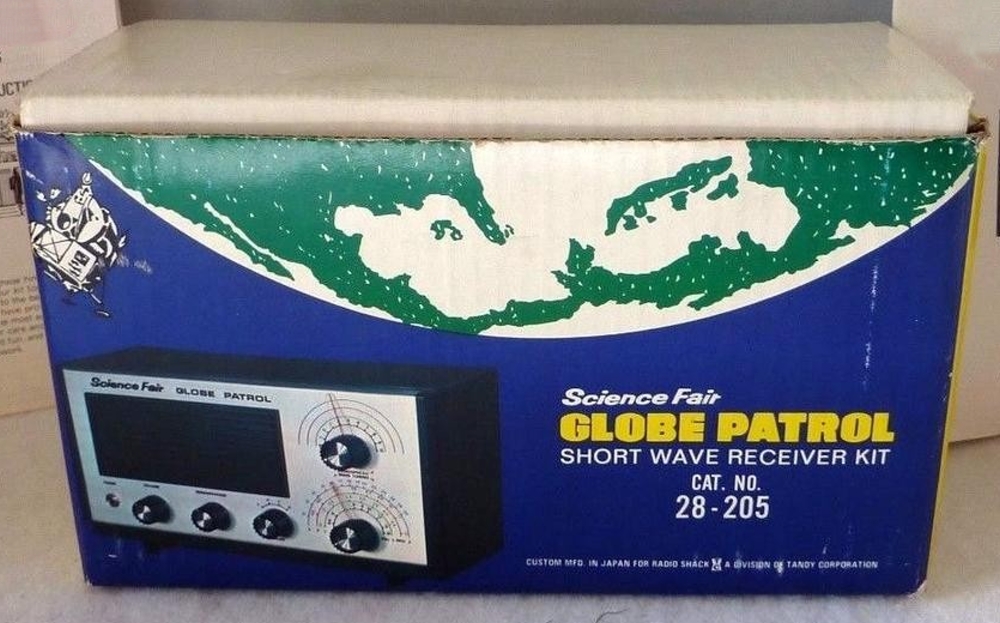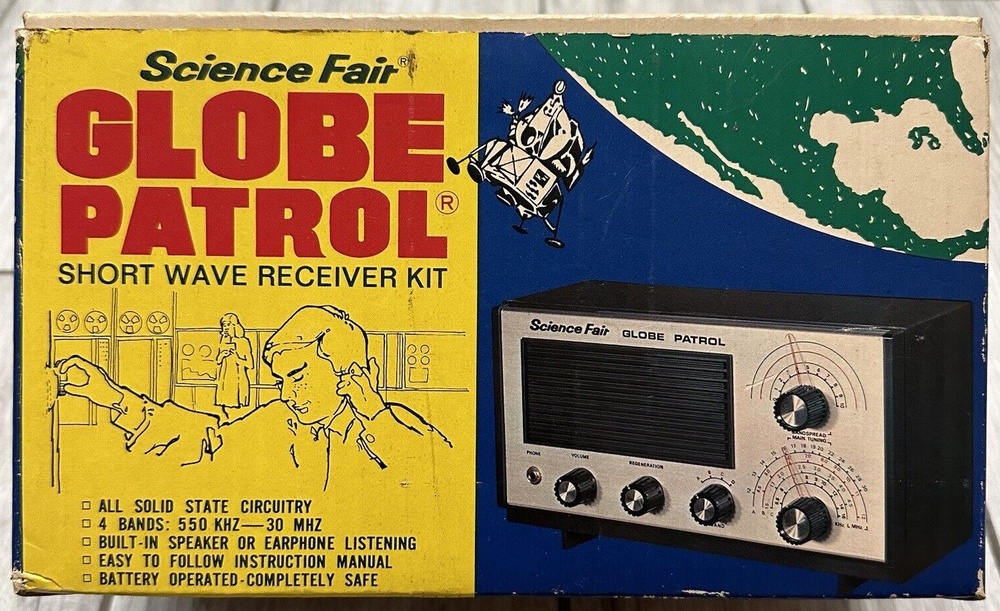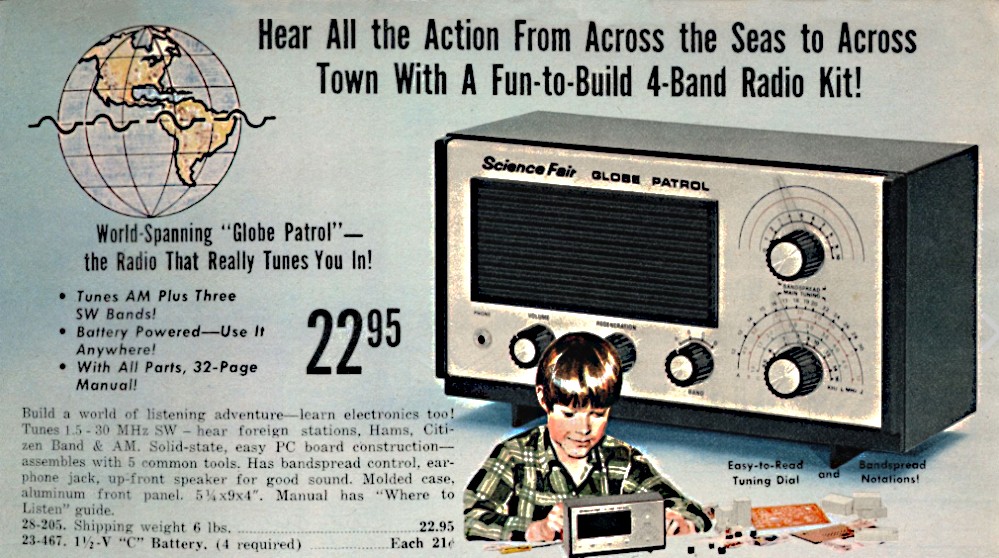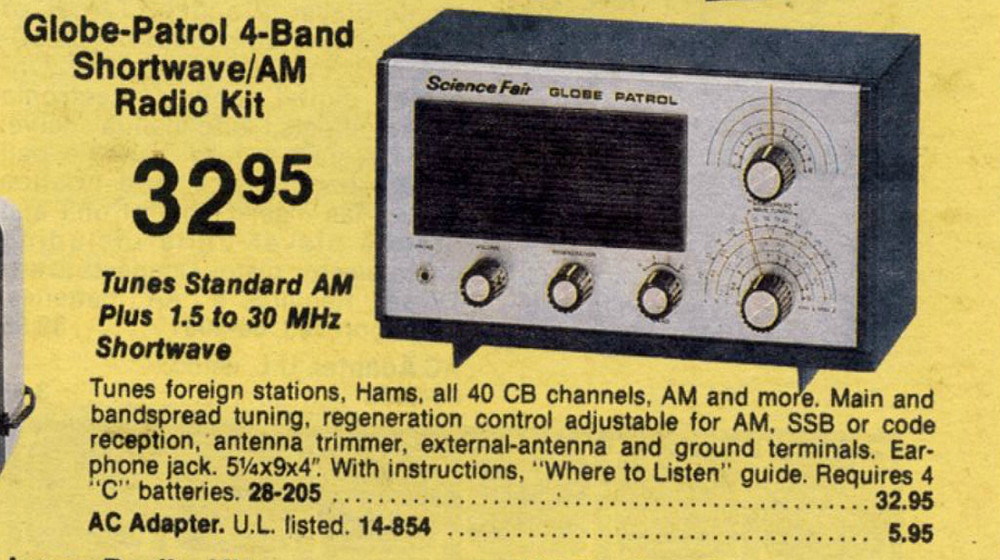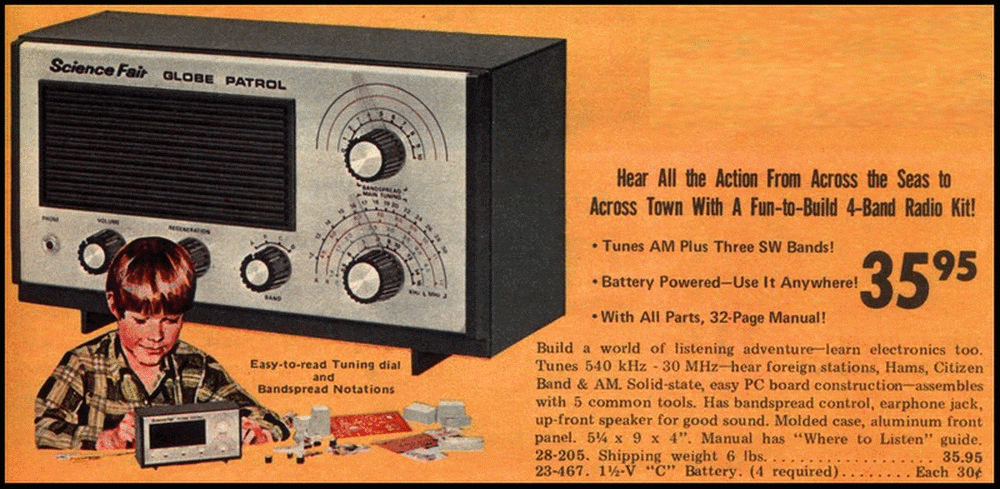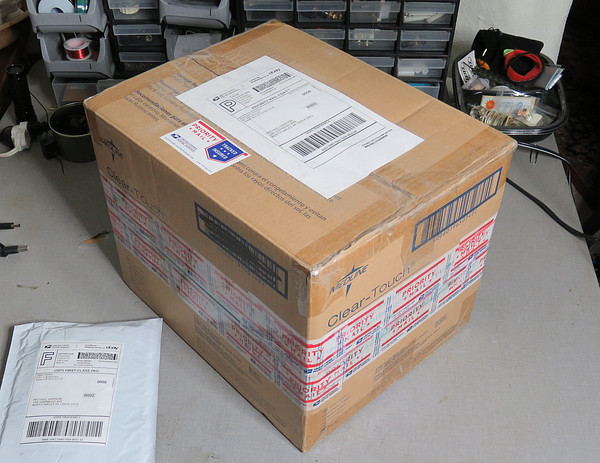|
|
|
|
|
|
|
A Science Fair GLOBE PATROL radio kit
built sometime around 1970. Science Fair kits were sold by
Radio Shack. |
|
|
|
|
|
|
A four band radio covering from the AM Broadcast
Band to 30 megacycles. |
|
|
|
|
|
This is the later model 28-205. |
|
|
Rear view showing the antenna trimmer and the
antenna and ground connections. An AC adapter jack is at
bottom-right. |
|
|
|
|
|
|
|
|
Size comparison of a Knight Space Spanner and a
Radio Shack Globe Patrol |
|
|
|
Of all the regen radio
kits sold from the 1950s through the 1970s, the Globe Patrol
probably had the best styling. The explanation for that is
written on the back of the radio. It was "custom
manufactured" in Japan!
The radio is small; it's only 5 inches high! It's 9 inches
across and 4 inches deep. I suppose that could be an
advantage, but the small tuning knobs make it hard to use.
It also has a very small speaker.
Radios such as the Knight Space Spanner and the Lafayette
KT-135 were "real" radios that you plugged into an outlet
and had vacuum tubes. They had wooden cabinets and weighed a
couple of pounds. The Globe Patrol hardly weighs anything.
It runs on 4 "C" batteries, and I think the reason they
chose that size was to weigh the radio down.
I had no interest in a Globe Patrol in the 1970s. It looked
like a toy. However, I've always wondered how well they
worked, so in January of 2020 I decided to get one, fix it
up, and try it out. |
|
|
|
|
|
| Mine didn't have a box, but this is
what one looks like. A NASA Lunar Module (LM) is orbiting a
planet (assumed to be the Earth) above a photo of the radio.
If the year was 1957, the LM drawing would be a Russian
Sputnik. If the Globe Patrol had existed in 1957 and had a
good antenna, it could possibly pick up signals from
Sputnik. It could NOT receive signals from an Apollo era
spacecraft. |
|
|
|
|
|
This is a more common box. Near the
top-center is the Apollo Lunar Module orbiting the Earth.
There was only one time when this happened. The date was
March 7, 1969 during the flight of Apollo 9. We even have
the name of the Lunar Module on the box; "Spider." Inside
were astronauts Jim McDivitt and Russell Schweickart.
Notice that the artwork on the center of the box is all the
way to the left on the box shown above it.
The box states that it is completely safe, but the manual
says to connect 50 feet of wire to a tree for an antenna,
and connect both the antenna and an earth ground to the
radio. Now if I were a lightning bolt... |
|
|
|
|
|
|
|
What's this picture on the box? It
seems to imply that if you buy this radio, you'll be able to
listen to Apollo spacecraft while in some sort of computer
room. You will be admired by a beautiful young woman, who
stands watching you in the background. She seems to be
dressed in just a towel, which may fall off at any moment.
Nobody will be able to tell if your mouth is open or closed,
or whether or not you have a pencil-thin moustache, or
whether you are actually cracking a safe in the picture. Why
is this even on the box? It has nothing to do with a radio
of any kind whatsoever. |
|
|
|
|
|
|
|
|
In this ad from 1971, some kid is
building what I thought of as a "toy" radio. How well would
that thing actually work? Sure, you can "Use It Anywhere,"
as long as you had 50 feet of wire in your back pocket for
an antenna.
As you read this, the boy suddenly becomes a girl with two
big pigtails in your peripheral vision. |
|
|
|
|
|
|
1979. Picks up all the CB channels! The cabinet
appears blue in this picture. |
|
|
|
|
|
Here's a later ad. The price has increased, but
the kid hasn't aged. What's he been doing all this time? |
| |
| |
|
|
|
Now it's a half
century later and I think I'll get one to see how it
works. I can add it to my collection of regen radio
kits. maryooch54 had one on ebay that was a
little beat up. Since it was the cheapest one on
ebay at the time, I grabbed it. The highest bidder
didn't try to outbid me. Maybe that was because I
only gave him one second to try it.
|
|
| |
| |
|
|
|
Three days later the
box with the radio and an envelope with some replacement
transistors both arrived in the mail. |
|
|
| |
|
|
| |


